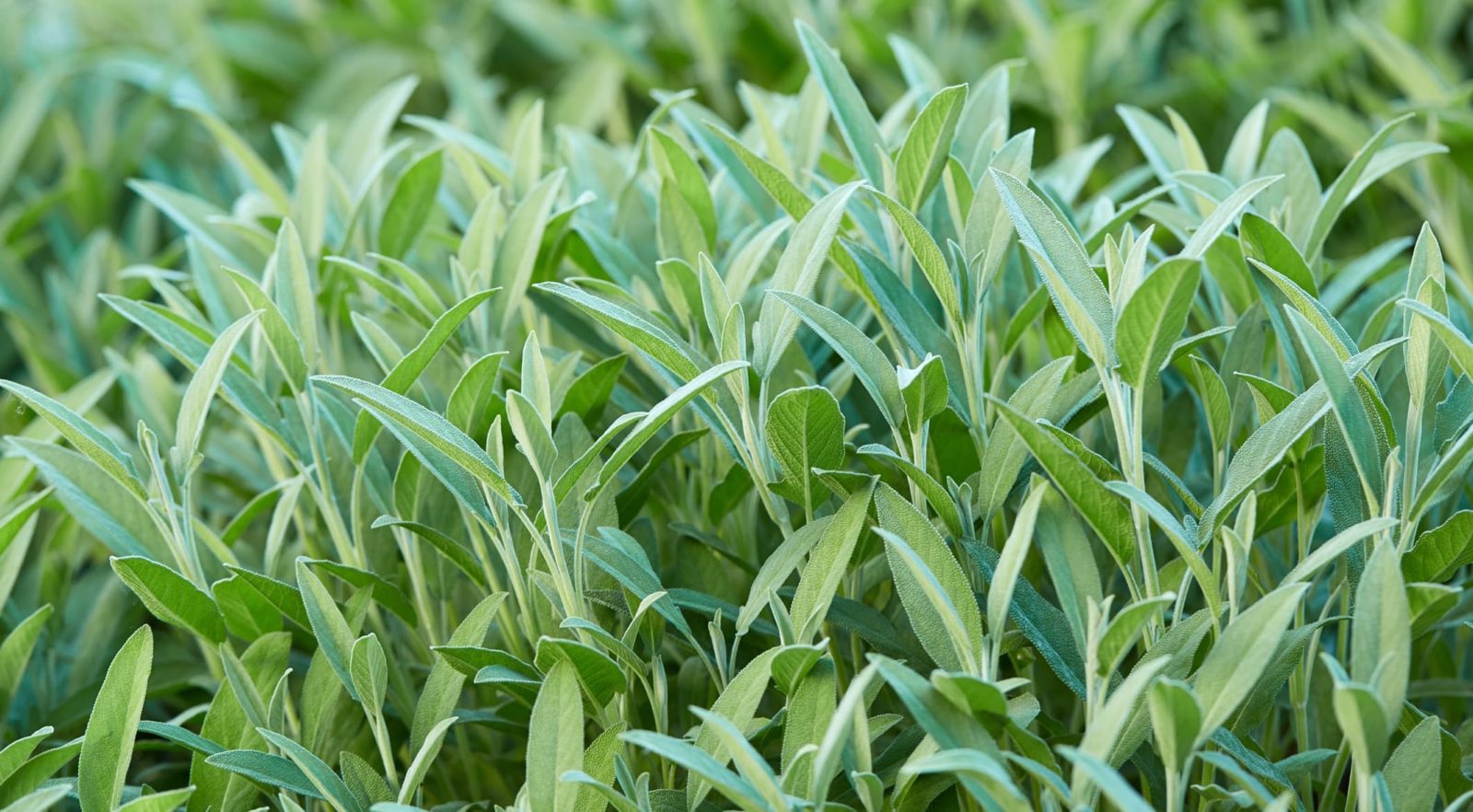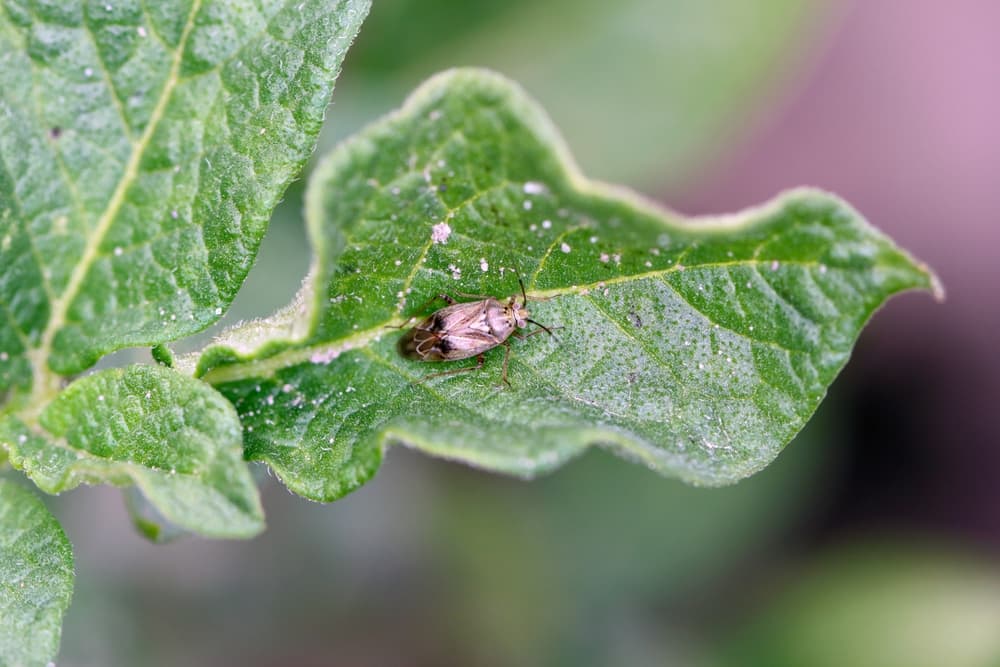Common Garden Sage: How To Grow Salvia Officinalis And Its Common Cultivars


Ed is a horticultural therapist, professional gardener and writer. Ed has a BSc in Occupational Therapy from Coventry University and a Diploma in Social and Therapeutic Horticulture (DipSTH) via Thive, the RHS and Pershore College. Ed runs a community kitchen garden in West Sussex, where he leads horticultural therapy sessions.
Reviewed By COLIN SKELLY

Colin is a Horticulturist and Horticultural Consultant with experience in a range of practical and managerial roles across heritage, commercial and public horticulture. He holds the Royal Horticultural Society’s Master of Horticulture award and has a particular interest in horticultural ecology and naturalistic planting for habitat and climate resilience.
Sage is a fantastic herb to grow, not only for its many culinary uses, but it looks great when grown as an ornamental as well.
It is easy to grow and care for and with hundreds of cultivars to grow, there is one to suit every spot, whether in the borders or in a container or pot outside the back door.
Sage has only a few growing requirements – which this guide will cover – and if grown in the right place and looked after correctly, it can provide you with your own herbs to pick all year round.
Overview
| Botanical Name | Salvia officinalis |
| Common Name(s) | Common Sage; Culinary Sage |
| Plant Type | Herb / Shrub |
| Native Area | Mediterranean, Africa |
| Hardiness Rating | H5 |
| Foliage | Evergreen |
| Flowers | Blue or purple flowers |
| When To Sow | March, April, May |
| Plant Out | June, July |
| Harvesting Months | Year-Round |
Sunlight
Preferred
Full Sun or Partial Shade
Exposure
Sheltered
Size
Height
0.5 – 1M
Spread
0.5 – 1M
Bloom Time
June – July
Soil
Preferred
Clay, loam
Moisture
Moist but well-drained
pH
Any
Salvia officinalis, common garden sage or sage as it is most commonly referred to, is an evergreen small shrub from the Lamiaceae family.1Garden sage – Salvia officinalis. (n.d.). Kew Royal Botanic Gardens. Retrieved March 24, 2023, from https://www.kew.org/plants/garden-sage
It is an intensely aromatic herb, with soft green-grey leaves and light blue flowers in summer.
Classified as a sub-shrub, it is also often described as a perennial as in some parts of the UK – it may lose its leaves and die back a bit in winter, only to regrow again come spring.

Native to the Mediterranean, its name stems from the Latin ‘salvere’, which translates as ‘to be well’.2Italian word of the day: “Salve.” (2018, October 22). The Local Italy. Retrieved March 24, 2023, from https://www.thelocal.it/20181022/italian-word-of-the-day-salve
Varieties
There are numerous cultivars of sage to grow, with some being rather tricky to come by here in the UK.
However, there are some that are simply stunning and widely available, with foliage ranging from white and green to deep purple.
S. officinalis ‘Purpurascens’ AGM

‘Purple sage’ as it is widely known, is a dwarf shrub growing to no more than H1M x W1M.
With stunning purple stems and foliage when young, which turn green or grey with age, it produces small purple or blue flowers in summer.
Its flowers will act as a magnet to bees and other pollinators.
S. officinalis ‘Icterina’ AGM

S. officinalis ‘Variegata’ as it is sometimes known, is a variegated dwarf shrub with yellow-gold and pale green foliage and pale blue flowers.
Growing to an eventual size of H1M x W1M, it is another ‘Plant for Pollinators’ that will prove popular amongst bees and butterflies.
S. officinalis ‘Tricolor’ is another variegated variety, but with white and green leaves which are tinted pink on the new growth and produce blue flowers in early summer.
A small, but spreading shrub, it will grow to H.4M x W.3M and is well suited to containers and pots.
How To Grow Sage
Being native to warmer climates, it is no surprise that sages grow best in full sun, a south or west-facing spot is ideal.
Sage requires free-draining soil and the plants hate their roots becoming waterlogged, especially during winter.

Sages are widely available from spring onwards as potted plants to grow directly in the ground or in containers.
Soil Requirements
If grown in heavy soils, it is advisable to add some grit to the compost mix or to the bottom of the planting hole, if planting directly into a border.
If growing in pots, feet can also be used to lift the pot a few centimetres off the ground to help excess water drain away from the roots.
Watering
Sages are fairly drought-tolerant, but need to be watered until established and during hot and dry periods.
However, try not to overwater as doing so can cause the plant to sulk.
Pruning
Pruning sage plants is relatively easy, they simply require any flowers to be deadheaded and the foliage lightly pruned for shape and size straight after flowering in summer.
Winter Hardiness
S. officinalis is hardiness rated as H5, meaning it is hardy down to temperatures of -10 to -15°C and will survive most winters here in the UK.

Sages may struggle during a wet winter though.
They are thankfully easy to propagate and grow as back-ups in case they don’t survive a harsh winter.
Growing Sage From Seed
Sage can be grown from seed in spring, which even though is a far cheaper option, will take longer until it can be used for cooking.
To grow from seed:
- Simply fill a small pot with a peat-free multi-purpose compost and sow 3-5 seeds spaced out evenly on top.
- Cover lightly with compost or vermiculite and water gently – germination requires a temperature of 21°C, which either a warm indoor windowsill or a propagator can provide.
- Once germinated, move to a spot with indirect sunlight and allow to grow on until 3-5cm tall. Remove or transplant all but one seedling per pot.
- Grow the seedlings on under cover until all risk of frost has passed, when they can then be hardened off before planting or placing outside.
Sage is easy to grow from cuttings and is a reliable way to produce more plants for free.
Growing Sage From Cuttings
For the best chance of success, cuttings roughly 8–10cm long of new growth can be taken from May to July.

To prepare the cuttings:
- Cut just below a leaf node and strip off the lower leaves using a clean and sharp knife or pair of secateurs.
- Leaving just a few leaves at the top of each stem, place the cuttings 5cm deep around the edge of a pot filled with multi-purpose compost and water.
- Cuttings do not like to be allowed to dry out. To prevent this, a clean plastic bag can be placed over the top of the pot and cuttings, but make sure the bag does not touch the leaves.
- Keep out of direct sunlight, remove the bag after approximately 3 weeks and continue to grow until each cutting has developed its own roots and can then be potted on.
Harvesting
Sage leaves can be picked all year round, although it is said that the young shoots and leaves in summer can be the most flavoursome.
Leaves can be picked individually or a small stem taken and used fresh, dried or frozen.
To store as dried herbs, cut a bunch of stems and hang to dry in a dark and airy place.

Once completely dry, they can then be stored in a sterile and airtight jar until needed.
“As with other garden herbs, the tips or chopped leaves can be frozen in ice cubes and then put straight into stews and casseroles in winter,” shares Master Horticulturist Colin Skelly.
“This has become my go-to method in a kitchen with limited storage space.”
Common Problems
Sages are on the whole relatively pest and disease-free, although they can be susceptible to slug and snail and capsid bug damage.
Slugs & Snails
Slugs and snails can be troublesome when growing sage plants, especially when the plants are young.
Slugs and snails will often leave a slimy trail and holes in the foliage behind them, even if you don’t see them during daylight hours.
Slugs and snails are so prolific that some damage needs to be tolerated. However, certain measures can be taken to reduce the threat.
Slugs tend to eat at night and a torch-lit slug hunt can prove surprisingly effective, along with using copper barriers, beer traps and encouraging predators such as hedgehogs, frogs and toads and birds in the garden.
Capsid Bugs
Capsid bugs attack several ornamentals including hydrangeas, fuchsias and sages.
Feeding on plant sap, they damage the foliage and new buds leaving behind tell-tale holes.

Being up to 1cm long they are easy to spot and regular checks of sage plants from early spring is recommended, before a more serious infestation might occur.
Non-chemical controls are limited, but encouraging predators such as birds, hedgehogs and beetles may help.
Chemical controls can include fatty acids and plant oils, however these sprays may need frequent re-application, as per their instructions.
For heavy infestations, insecticides are available – however, they must not be used when the plant is in flower, as this can pose a danger to bees and other pollinators.
References
- 1Garden sage – Salvia officinalis. (n.d.). Kew Royal Botanic Gardens. Retrieved March 24, 2023, from https://www.kew.org/plants/garden-sage
- 2Italian word of the day: “Salve.” (2018, October 22). The Local Italy. Retrieved March 24, 2023, from https://www.thelocal.it/20181022/italian-word-of-the-day-salve
